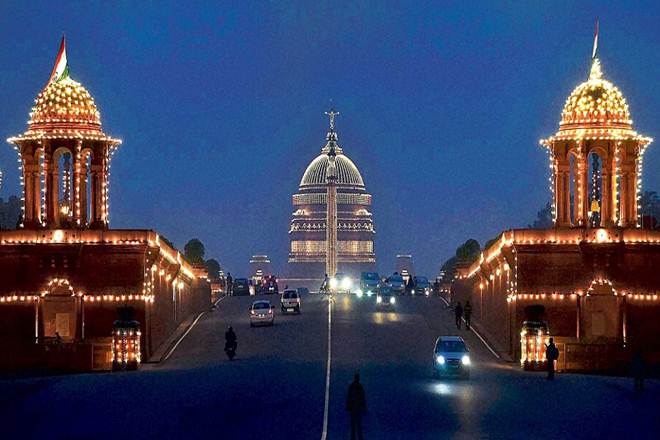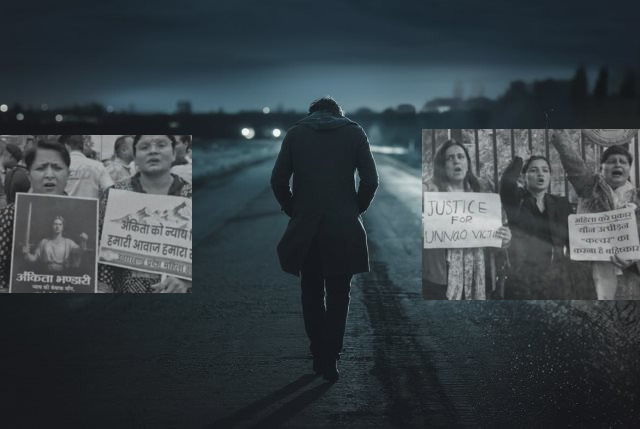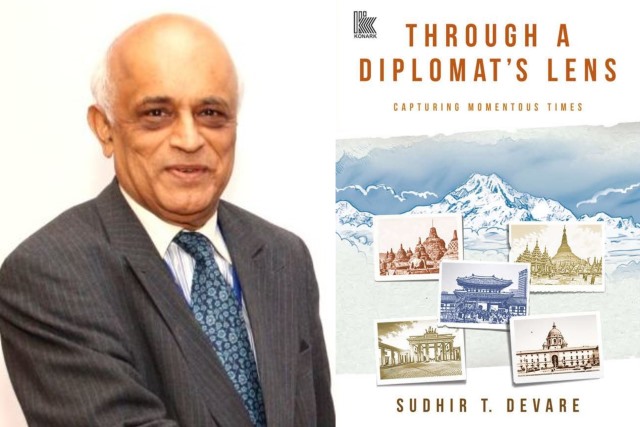
Plan For A Rajpath Revamp Is Fraught With Risks
Earlier this month, the Modi government announced an ambitious plan to redevelop, reinvent and rebuild the area around the four-kilometre stretch from the India Gate to the Rashtrapati Bhavan in the Indian Capital. Also known as the Central vista, the wide lawns in the heart of Delhi, are flanked by a host of buildings which house various Central government offices.
Besides the imposing Rashtrapati Bhavan, which rests on the Raisina Hill, the North and South Block as well as the circular Parliament House are among the well-known buildings providing a befitting backdrop to the sprawling India Gate lawns which were constructed between 1911 and 1931 when the British shifted the Capital from Calcutta to Delhi. The other buildings like Shastri Bhavan, Udyog Bhavan and Nirman Bhavan were constructed in the sixties to provide accommodation for government officers attached to various ministries.
Dating back to the colonial era, the entire area represents a slice of history as it provides a glimpse of Delhi’s growth and evolution from a colony to an independent nation. Often compared to The Mall in Washington D.C, India Gate lawns are a favourite haunt of Delhi citizens for a leisurely stroll or an evening out with the family for ice-creams.
However, there is fear and concern in Delhi that its residents may be denied access to the Capital’s largest public space while the skyline along the majestic Rajpath would be drastically altered as the Modi government gets set to “build a new Capital” by the year 2022 when India celebrates its 75th Independence Day. These fears have been fuelled, following the government’s recent announcement inviting proposals to redevelop the Central Vista, to construct a new common secretariat for all ministries and to build a new Parliament building. Alternatively, the present Parliament House could be revamped and modernised. A final call on this is yet to be taken but bids for the new mammoth project have already been floated.
Describing the proposed plan for a new Capital as Prime Minister Narendra Modi’s dream project, Union housing and urban affairs minister Hardeep Puri justified the mega scheme, stating that several buildings in the Central Vista reflect the “colonial ethos that the country was subjected to” and that many buildings which were constructed in the sixties and seventies should have been torn down years ago.
Puri explained that the move had been necessitated as the present office buildings did not have sufficient space to accommodate the vast army of government officers. He proffered the same argument for the construction of a new Parliament building though he denied that the present one will be demolished. However, it could be converted into a museum along with the North and South Block buildings which currently house the prestigious Prime Minister’s Office and the ministries of defence, external affairs, home affairs, and finance.
The government’s decision has led to serious concern among architects, urban planners and conservationists in the Capital in view of Modi’s known passion for constructing grand towering structures. More importantly, everyone is convinced that this mega project is an attempt to erase the past so that Modi can leave behind his own personal legacy. It fits in with the BJP’s moves to remove or downgrade buildings associated with the old regimes, especially the Nehruvian period. For instance, both the South Block building, as well as the Parliament House, serve as a constant reminder about the role played by the country’s first Prime Minister and other senior Congress leaders in the nationalist movement and building a modern India. Sadly, the BJP has no such icons to showcase and so the urgency to leave behind its own imprint.
Puri’s reference to the building reflecting “colonial ethos” has everyone particularly worried as it would appear that the Modi government wants to change the character of Central Vista and its surrounding areas which are dotted with heritage buildings. This is being viewed as a dangerous trend as it could set a precedent for designating Hindu and Mughal-style architecture and justifying the destruction of what does not conform with the ruling Bharatiya Janata Party’s world view.
Though there is agreement that some of the latter-day government buildings do need to be revamped, there are strong reservations about the manner in which the government is rushing ahead with its plans. No proper guidelines have been laid down for the project though it has far-reaching implications for the Capital’s heritage zone.
No heritage assessment has been conducted about the state of the buildings to identify structures which need to be demolished or others which can be modernized without razing them. There has also been no consultation with various stakeholders and no public discussion on this massive project. The unilateral announcement came as surprise when the government, without giving any inkling about its intentions, invited bids for the redevelopment of the Central Vista.
While questioning the unseemly haste with which the government is proceeding with this project, architects and conservationists, including AGK Menon, Raj Rewal, and Gautam Bhatia have been at pains to point out that heritage buildings like the Parliament House and North and South Blocks should not be razed and instead these should be modernized while retaining the outer façade. They cite the examples of the Capitol Hill in Washington D.C. and the British Parliament (Westminster) in London in this regard as these have been upgraded over the years but the outward look has remained unchanged.
As the debate on this project rages on, the Delhi chapter of the Indian National Trust for Art and Cultural Heritage has drawn attention to specific issues in connection with this project. AGK Menon, chief consultant INTACH, pointed to the bid document laying down that guidelines must be followed for the redevelopment of the Central Vista. But there is no clarity on what these guidelines are as these have not been spelt out. “There are no objectively defined parameters in place to guide future development,” the INTACH statement added
Referring to the haste with which the government intends to carry out its plan, INTACH has pointed out, “The bid document states that the government wants to build a legacy for the next 150 years, but the timeline proposed to complete the project does not support this objective.”
Menon further pointed out that the financial terms set to identify potential bidders were designed in such a way to exclude the country’s best architects and planners. Seeking changes in the terms, Menon maintained that the financial terms for the bid “appear to be an open call to foreign players or large multinational Indian entities.”



